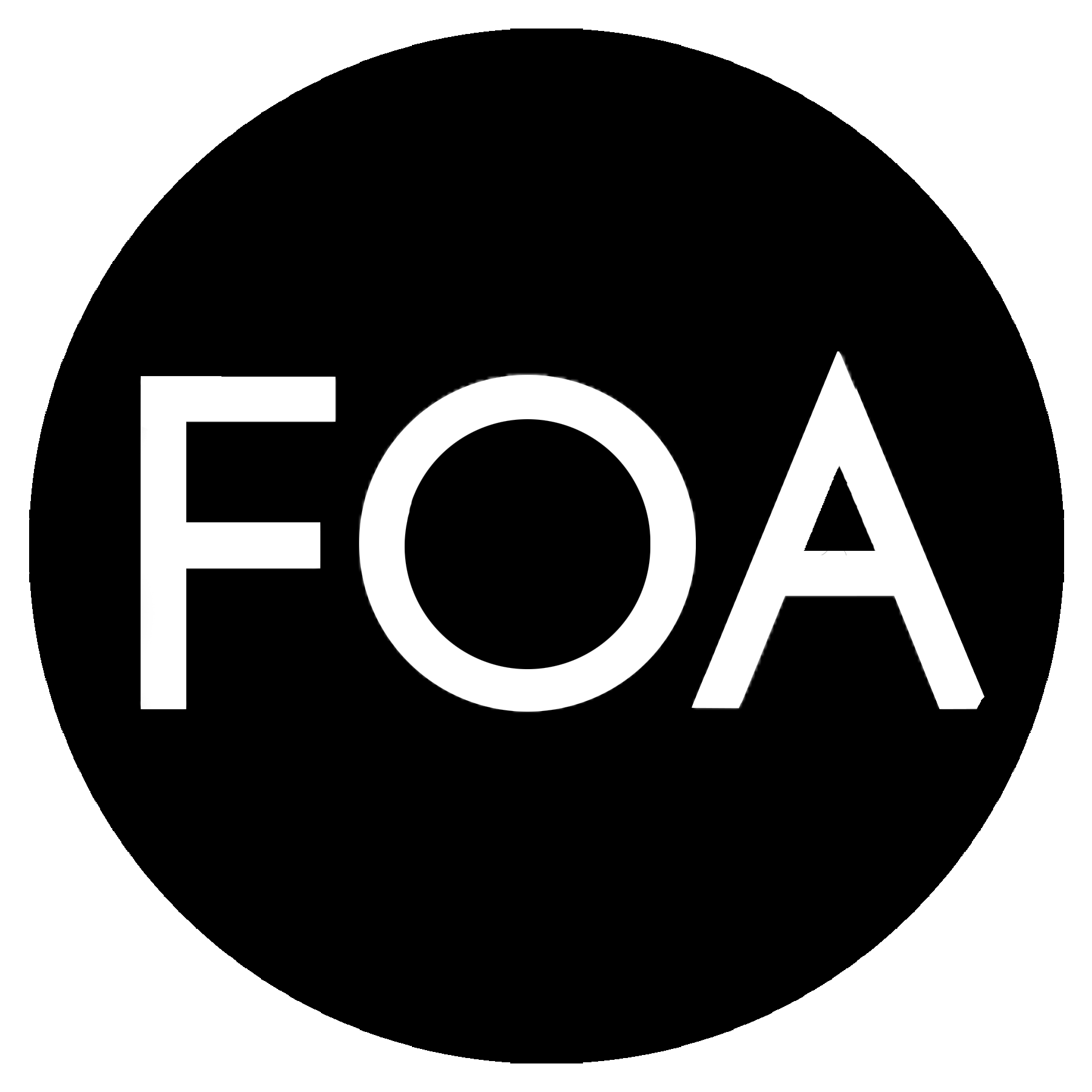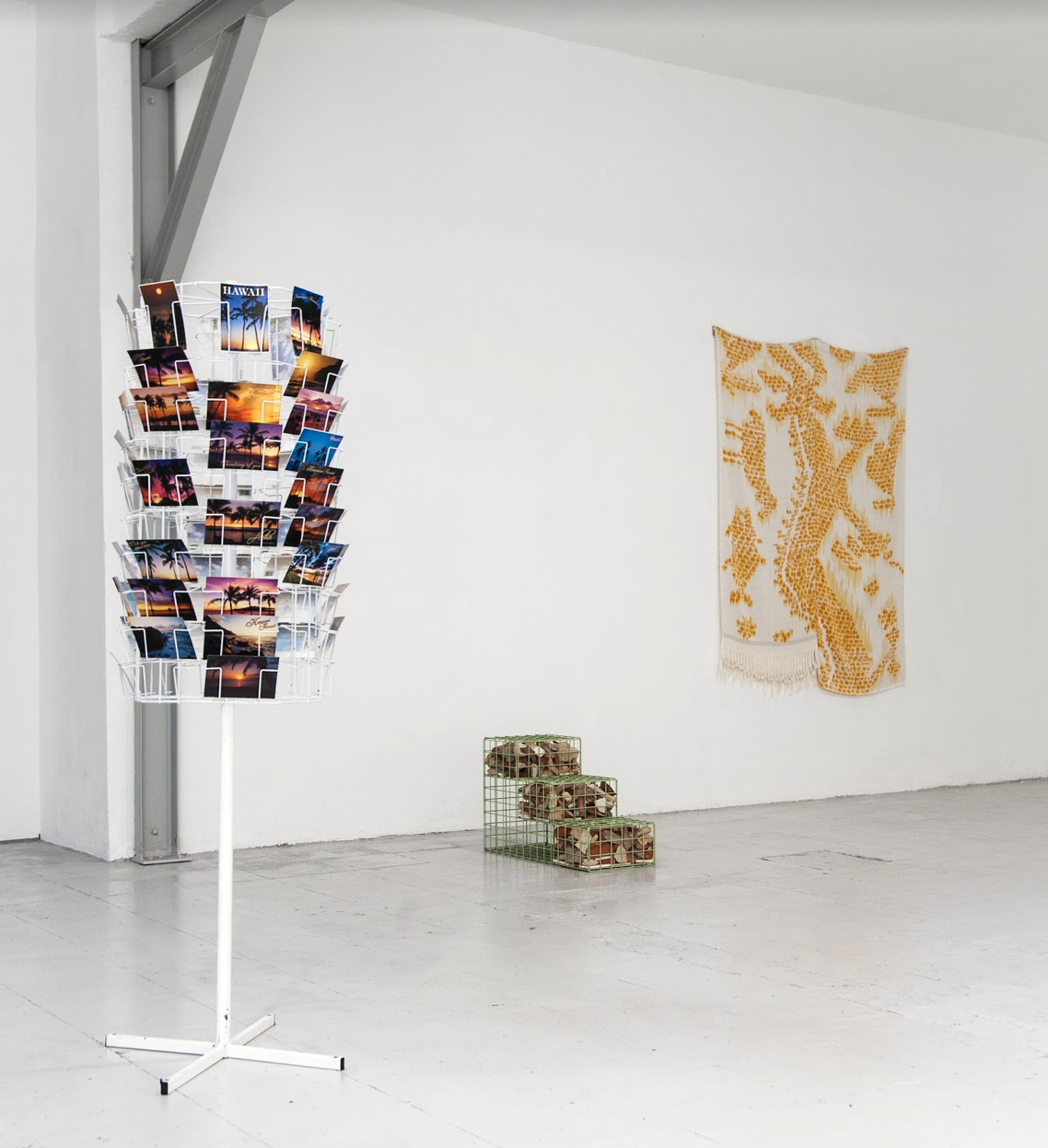Alice Bonnot on 'Out of Office' at PADA
Out of Office at PADA Studios in Lisbon, Portugal
May 12 - June 9, 2019
Works by Luke Burton, Mark Corfield-Moore, Adrien Missika, Teresa Braula Reis, Jamie Fitzpatrick, and Thomas Langley
Curated by Alice Bonnot
Alice Bonnot is an independent curator and art consultant based in London. She is the co-founding director of Picnic, a contemporary art space occupying a long window in the Aylesham Centre in Peckham, London, and the founding director of the Zone d’Utopie Temporaire (Z.U.T.) residency programme, a nomadic annual residency addressing the notion of Utopia as a vehicle for artistic and critical comment. In this interview Ty Bishop and Alice Bonnot discuss her new exhibition Out of Office at PADA in Lisbon, Portugal and her practice as a curator and consultant.
TB: You’re exhibition titled Out of Office centers around notions of leisure and labor. How did you come up with this idea?
AB: I am interested in organising exhibitions that address contemporary challenges, ranging from socio-political issues to broader concerns relating to society. For this exhibition, I started from the simple observation that in our present society, confusion can be made between the notions of employment and work. Employment is paid work, which is the subject of a contract. Work, on the other hand, is an activity or a practice that contributes to the common good. Nowadays, everyone might not be employed but the majority might be working. A person actively engaged in an association works, or a volunteer who gets involved in the life of their community works, even a mother who raises her children at home works; but they won’t receive any financial contribution.
In the art industry this is something very common. Artists can spend days and nights working on a painting or a sculpture; as long as they do not sell one of their pieces they will not receive any remuneration. One could say that it is for this reason that art is often subsidised and that artists can be paid through public or private subsidies; yet every year, the budgets allocated to culture are constantly being cut.
In parallel, employment is commonly seen as labour. To pay for the necessity of life and to be able to enjoy leisure time. But what happens when this line blurs? Are you working when you are enjoying what you are doing? Can you call it work to be on holiday? When does your working day start when you are an artist? And when do you consider yourself ‘on annual leave’ or ‘out of office’? I wanted to invite six artists whose practices illustrate these different points of view, and to explore what are the boundaries between leisure and labour within artistic work.
TB: Can you talk about some of the artists you selected?
AB: As the result of travels driven by a personal vocation for the exotic Adrien Missika, who often describes himself as a ‘professional tourist’, produces work using a wide range of media (photography, video, installation). For Out Of Office, Missika presents a sculpture composed of fifty-five sunset postcards that he purchased during a trip in the Hawaii archipelago in the summer of 2011. Hawaii, Turkmenistan, India, Lebanon, to name a few, are some of the countries the artist has traveled to, making the world his place of work.
Mark Corfield-Moore is a multidisciplinary artist who employs the time-consuming method of weaving to address contrasted notions of leisure and holidays. Bored Courtier and From Our Honeymoon both use symbols of vacation and recreation to denounce the absurdity of mass tourism. The first one evokes large Amalfi Coast’s parasols, while the second references the souvenirs that tourists buy in Thailand regardless of their exact meaning.
Teresa Braula Reis’ sculptures borrow their materials from those of the construction industry. Concrete, steel, and rubble are reassembled to create new objects that explore the concept and the matter of the modern ruin. Her interest in the dualistic condition of the act of building, often followed by a decaying or destruction process, led her to produce sculptures that testify to this act of construction.
TB: A lot of these artists are working in a variety of mediums. Are there any challenges to incorporating multiple mediums in the same space?
AB: I like to see the exhibitions that I curate as investigations on specific subjects relating to society, through the eyes of contemporary artists. For this reason, when I curate a group exhibition that attempts to engage an audience with, for instance, a socio-political theme, it is essential for me to include a large variety of medium. Each medium presents a different interpretation and a singular way of approaching a subject. Not only conceptually it allows to broaden the discussion to all mediums, but aesthetically it also allows to offer a dynamic proposal between different materials, textures, colours, and formats.
TB: Out of Office is held at PADA Studios in Lisbon, Portugal, which is a really amazing space. Is there any relation to the exhibition theme and the physical location of the space?
AB: In addition to questioning this work-employment debate, the Out Of Office exhibition is anchored in a singular geographical context. In the space of a few years, Lisbon has become a fashionable European destination. Tourists are flocking, the beaches are getting crowded, so much so that locals can no longer afford to live in the city centre because of the now exorbitant price of Airbnb rentals. How then to preserve the beauty, the culture and the history of this beautiful city, while continuing to attract tourists who participate in raising the economy?
TB: I’m curious how the theme of labor and leisure relates to your role as a consultant and curator. What are your favorite parts about being a curator and art consultant, and what are some of your favorite things to do for leisure?
AB: Inevitably, this issue of division between work time and leisure time applies to my own situation. The reason I decided to start my own business and to work as a freelance curator, after working for galleries as a full-time curator and gallery manager, was to be able to manage my time as much as I wanted. Now my situation is very similar to that of the artists. I decide when my workday starts and when it stops, and my income fluctuates more than when my situation was more stable.
The favourite part of my job is to spend time with artists whose work and values I esteem, to follow the evolution of their practice and to create as many opportunities as possible to work together. I really enjoy my activity as a curator, which I find very fulfilling. As a result, I often end up working on my free time.
TB: What made you want to work in the arts in the first place?
AB: I have always been passionate about art and culture. As a teenager, I remember spending time at the museum or reading art magazines. The feeling that it gave me was truly unique. I don’t come from an artistic family, so discovering the power of art by myself has been very liberating.
TB: For the past several years you’ve done a lot of work in London. What’s been your experience of the art world like in London, and what excited you about being in Lisbon?
AB: The London art scene is very dynamic. There are a large number of art schools, artists' studios and exhibition spaces. For an independent curator, London offers the possibility of organising exhibitions in a large variety of places, from commercial or non-for-profit galleries to artist-run spaces and temporary exhibition spaces. This diversity allows artists and curators to have a very active practice. At the same time, rents in London are very expansive and some galleries are struggling to survive. Yet, you can always find ways to develop projects that are less conventional. For instance, last summer, artist Daniel Curtis and I had the idea of transforming a long and narrow, unused vitrine space in a shopping arcade into an eye-catching contemporary art space. We contacted the shopping centre manager and we sent him a proposal. And that’s how Picnic Gallery was born! With the mission to offer artists a unique space and opportunity to develop works in relation to a wider public audience. Our exhibition programme, which is usually planned six months to a year ahead, is based on responding directly to the unique attributes of the space, as well as its location in a walkway.
I am very keen to see if this type of spontaneous answer to an empty space is possible in Lisbon. Although the artistic scene is smaller here, it hosts high-quality exhibition spaces and it attracts a growing number of international artists.
TB: I want to hear more about the Zone d'Utopie Temporaire residency that you created back in 2014. It’s quite impressive that you’ve organized such an extensive residency over the span of four years in four countries. What inspired you to start this residency?
AB: In 2014, two friends and I started to brainstorm about launching an art residency project in France. The desire was to explore art’s potential to drive change and to experiment with alternative cultural structures. The book T.A.Z.: The Temporary Autonomous Zone written in 1991 by Peter Lamborn Wilson, an American anarchist writer, and poet, inspired the title of the residency. His work highlighted the idea that the most efficient way to disturb the status quo is to multiply the creation of Temporary Autonomous Zones, rather than focusing on one great revolution. Interested in this vision that recognizes the power of small actions, we decided to invite artists and theorists to work together around the notion of Utopia, as a vehicle for artistic and critical comment. By replacing ‘Autonomous’ by ‘Utopian’ we wanted to see whether to be reached, Utopia could be achieved gradually; starting at certain given time and place, before spreading into larger territories. In the context of this project, ‘Utopia’ is approached as ‘a distance a society is capable of taking from itself to feign what it could become’ (Labroue 2015). After a first successful edition in Paris in 2015, I wanted to broaden the residency’s scope and vision by bringing the residency to different countries. The necessity to be a nomadic programme forces the participants to take in consideration the city’s economic, political and social aspects and to produce works that reflect those realities. The second edition took place in 2016 in London, a city sharing many similarities as Paris. Consequently, for the third and fourth editions (respectively, in 2017 and in 2018), I decided to host the residency in Athens and in Lisbon, which required us to approach Utopia in a very different way
TB: You’ve had the pleasure of working with many artists in several countries. Any tips you want to share with other emerging artists from your experience?
AB: To me the key is honesty, generosity and perseverance.




